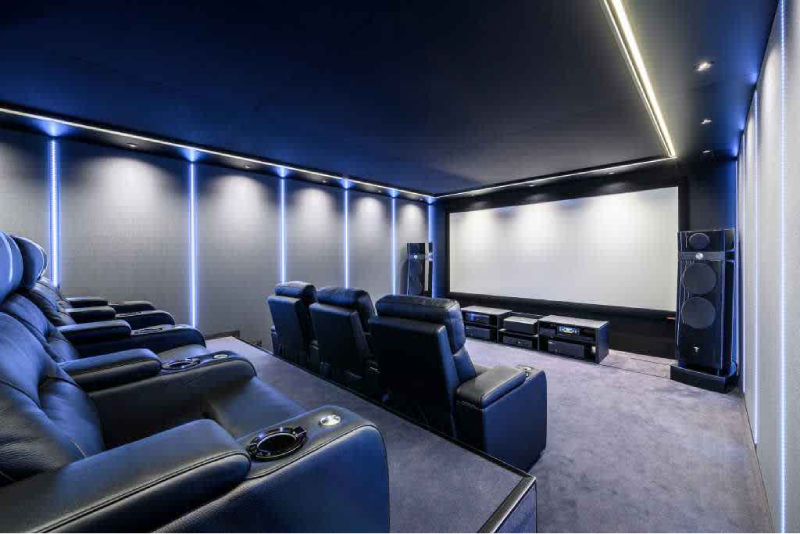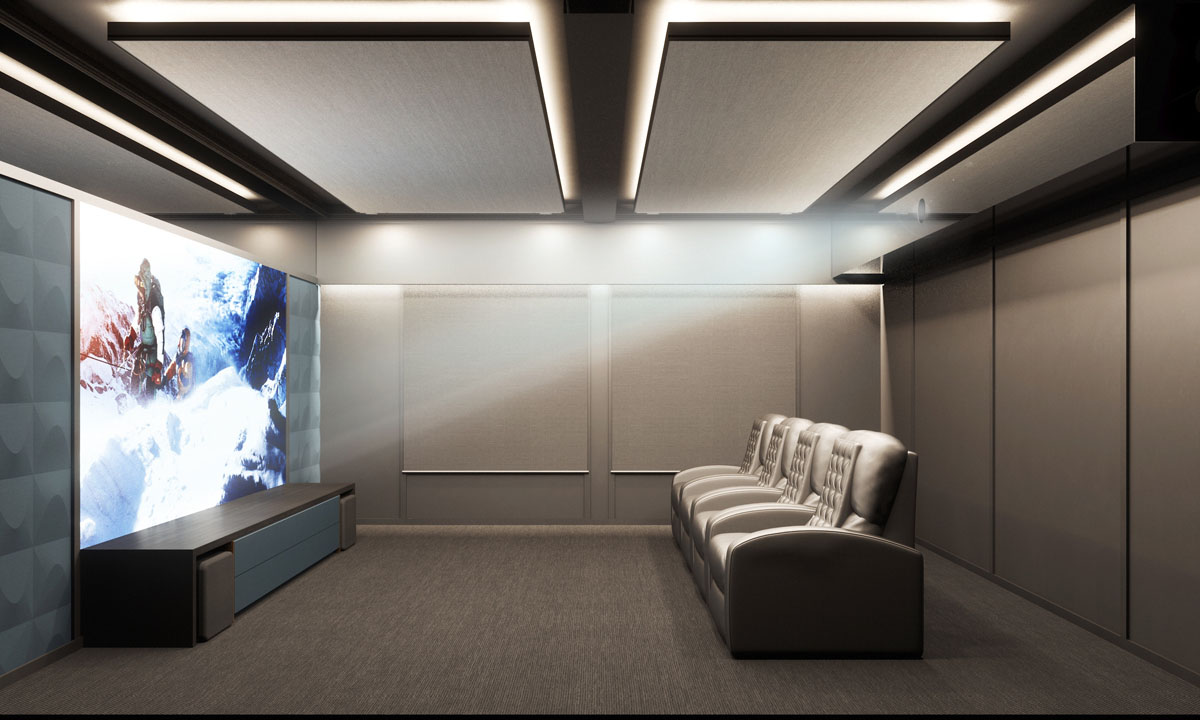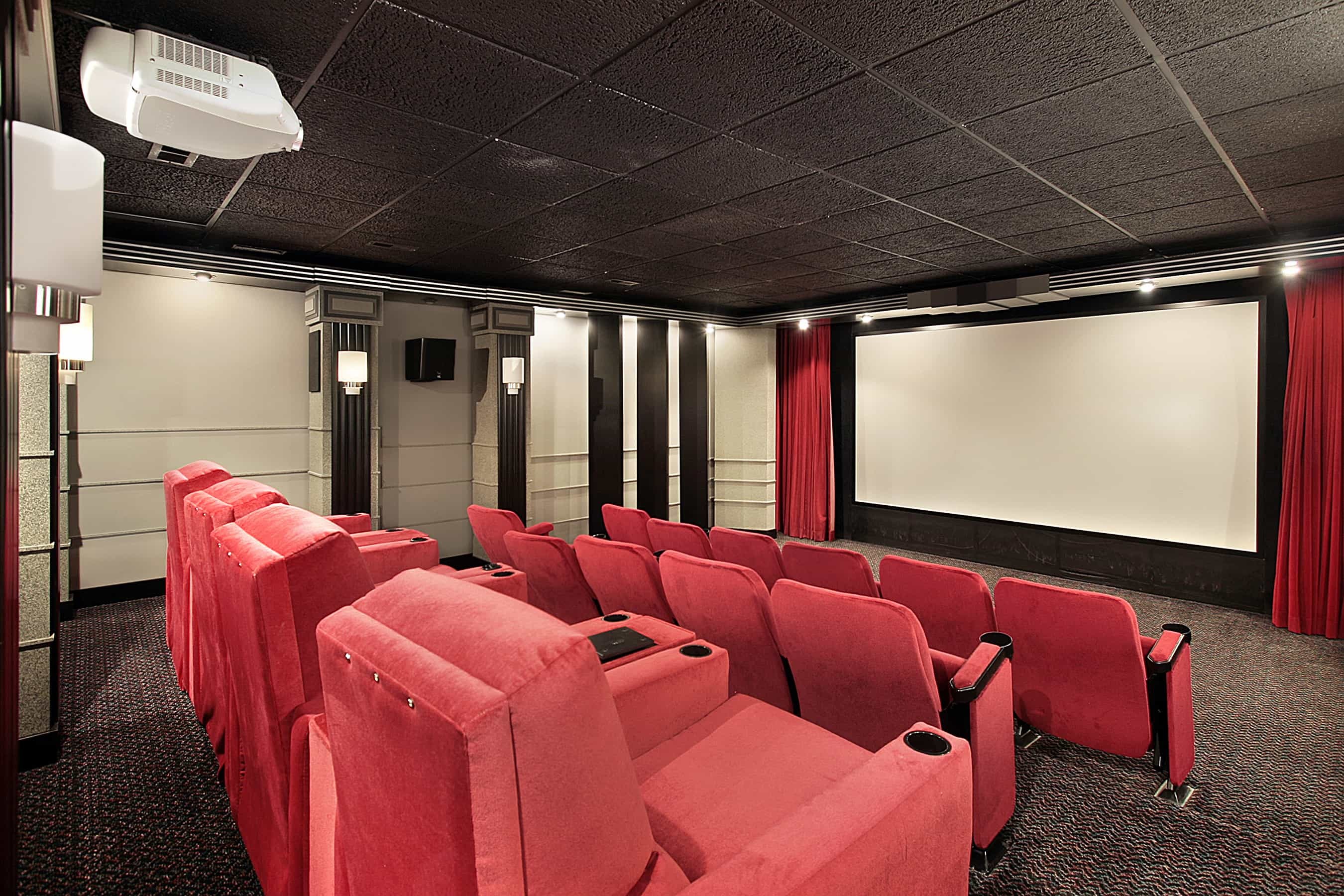Home Theater 101: Everything You Need to Know for a Cinematic Experience in your home
Developing a home movie theater that measures up to the cinematic experience of a business theatre includes careful consideration of several elements, including display selection, stereo, and space format. Each aspect plays a crucial duty in attaining the desired atmosphere and capability. Whether you are contemplating the perfect display dimension or the complexities of surround noise, recognizing these basics is important. As we check out these vital components, it comes to be evident that the options made can significantly impact your general watching experience, leaving one to contemplate how these choices will certainly shape your individual cinema.
Picking the Right Screen
When setting up a home theater, choosing the appropriate display can make or damage the checking out experience - home theater design tampa. The screen serves as the focal point of your arrangement, affecting photo top quality, viewing angles, and overall aesthetic. Key variables to think about include screen type, resolution, and dimension
First, establish the suitable screen size based on your area measurements and seating range. Next off, pick between numerous screen kinds, such as fixed-frame, mechanized, or retractable screens, each offering distinctive benefits.
Resolution is an additional critical element. For a truly immersive experience, take into consideration a display created for 4K and even 8K content, guaranteeing intensity and clearness. Additionally, take into consideration the display's gain, which affects illumination and contrast; a greater gain can enhance brightness in well-lit spaces, while a reduced gain might be preferable for darker atmospheres.
Selecting Audio Equipment
Audio equipment is an important element of any home movie theater system, considerably enhancing the overall viewing experience. The choice of audio gear can determine the depth, clarity, and immersion of audio, essential for creating a cinematic atmosphere.
When selecting audio devices, think about a border stereo, which typically consists of a receiver, multiple speakers, and a speaker. A 5.1 or 7.1 channel system is advised, where the initial number represents the speakers and the second the subwoofer, supplying an immersive soundscape. The receiver is the heart of the system, handling sound and video signals, and ought to support contemporary formats like Dolby Atmos for an improved spatial experience.
Quality speakers are important; try to find versions that offer a balanced sound account with good bass response. Floor-standing audio speakers can create richer noise, while shelf options conserve room. Furthermore, consider cordless options for simplicity of installment, although wired systems commonly deliver exceptional performance.

Optimal Seating Plans
Developing an ideal home cinema experience pivots considerably on optimum seating setups. The arrangement of seats plays an important role in both convenience and seeing high quality, straight impacting the general cinematic experience.
First, think about the screen size and viewing distance. A typical guideline is to place seats at a range approximately 1.5 to 2.5 times the diagonal dimension of the screen. This guarantees an immersive experience without stressing the eyes.
Next, altitude is essential. If your seats is in a tiered format, the back rows must be greater than the front to avoid blockages. For flat seating, make sure that the front row is not too near the display, and that every person has a clear line of view.
Moreover, take into consideration the setup in regards to social dynamics. Group seating can enhance the public experience, while individual seats might be favored for individual watching.

Lastly, focus on comfort with ergonomic seats that supports extended watching durations. Integrating recliners or cushioned seats can significantly boost the experience, making the home theater a preferred location for both home entertainment and leisure.
Lighting and Atmosphere
Effective lighting and setting are essential parts of a well-designed home movie theater, as they dramatically influence the watching experience. The best illumination can improve the cinematic feel, while inadequate options can interfere with it. For optimal outcomes, take into consideration a layered lighting technique that includes ambient, job, and accent illumination.
Ambient lights gives basic illumination, guaranteeing that the space is not entirely dark, which can strain the eyes. Dimmer switches are highly recommended, permitting changes based on the material being viewed. Job lighting, such as wall sconces or flooring lamps, provides functional lighting for tasks like reading or navigating the room without disrupting the general ambience.
Accent lights can be made use of to highlight architectural attributes or create focal points, adding deepness and passion to the area. LED strip lights behind displays or along shelves can give a refined glow that improves the aesthetic experience without overwhelming the viewer.

Wiring and Installation Tips
A well-planned electrical wiring setup is vital for achieving ideal efficiency in your home movie theater system. Correct wiring not only guarantees high-quality audio and video clip signals but additionally improves the total visual of your room. Begin by drawing up your layout, determining where each component will certainly be put, including your display, audio speakers, and receiver.
When choosing cables, focus on premium, appropriately gauged electrical wiring to reduce signal loss. HDMI cables must be made use of for video clip connections, while audio speaker cable must match the specifications of your speakers and amplifier. Decide for in-wall rated wires to conform with safety criteria and maintain a clean look.

Verdict
In summary, creating an extraordinary home movie theater experience calls for careful consideration of various components, including display option, audio equipment, seating arrangements, illumination, and electrical wiring. By focusing on these elements, a cinematic environment can be efficiently duplicated, enabling for immersive checking out experiences that measure up to traditional theater setups.
Creating a home theater that measures up to the motion picture experience of an industrial theater entails cautious factor to consider of several elements, including display choice, audio systems, and room layout.When establishing home theater tampa up a home movie theater, picking the ideal screen can make or break the watching experience. Next off, choose between various display types, such as fixed-frame, mechanized, or retracting displays, each offering distinctive advantages. For an absolutely immersive experience, consider a screen developed for 4K or also 8K web content, guaranteeing intensity and quality.In summary, creating an extraordinary home cinema experience calls for mindful consideration of numerous components, including display option, audio equipment, seating plans, lights, and wiring.
Comments on “Key Reasons to Choose Home Theater Tampa for Your Next Project”